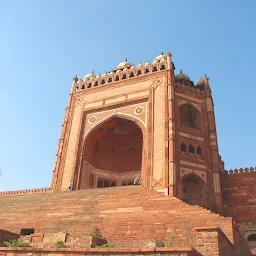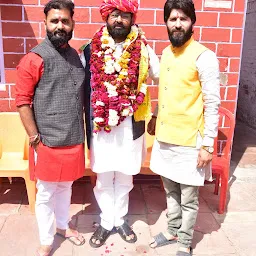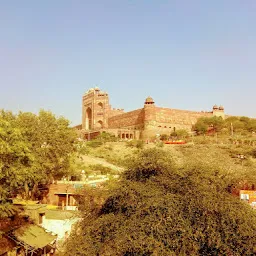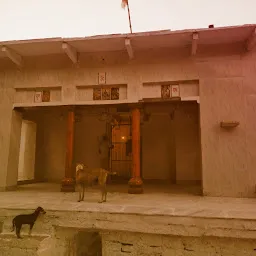Lal darwaja wall Corner
Dadupura, Fatehpur Sikri, Uttar Pradesh 283110, IndiaLal darwaja wall Corner is a historical landmark located in Fatehpur Sikri, Uttar Pradesh. The average rating of this place is 4.20 out of 5 stars based on 65 reviews. The street address of this place is Dadupura, Fatehpur Sikri, Uttar Pradesh 283110, India. It is about 0.89 kilometers away from the Fatehpur-sik railway station.
- Where is Lal darwaja wall Corner located?
- Lal darwaja wall Corner is located at Dadupura, Fatehpur Sikri, Uttar Pradesh 283110, India.
- What is the nearest railway station from Lal darwaja wall Corner?
- Fatehpur-sik railway station is the nearest railway station to Lal darwaja wall Corner. It is nearly 0.89 kilometers away from it.
Pushpendra Singh 13 months ago
You might think a customer experience map is not practical or useful for your company. Why do we need another customer experience map when we already have the customer journey map, right? Not exactly. In reality, the cases of success using this tool continue to increase.
Minshad 47 months ago
Fatehpur Sikri is a town in the Agra District of Uttar Pradesh, India. The city itself was founded as the capital of Mughal Empire in 1571 by Emperor Akbar, serving this role from 1571 to 1585, when Akbar abandoned it due to a campaign in Punjab and was later completely abandoned in 1610.[3]
The name of the city is derived from the village called Sikri which occupied the spot before. An Archaeological Survey of India(ASI) excavation from 1999-2000 indicated that there was a habitation, temples and commercial centres here before Akbar built his capital.
The khanqah of Sheikh Salim existed earlier at this place. Akbar's son Jahangir was born at the village of Sikri in 1569 and that year Akbar began construction of a religious compound to commemorate the Sheikh who had predicted the birth. After Jahangir's second birthday, he began the construction of a walled city and imperial palace here. The city came to be known as Fatehpur Sikri, the "City of Victory", after Akbar's victorious Gujarat campaign in 1573.
After occupying Agra in 1803, the English established an administrative center here and it remained so until 1850. In 1815, the Marquess of Hastings ordered repairment of monuments at Sikri.
History
Basing his arguments on the excavations by the Archaeological Survey of India (ASI) in 1999-2000 at the Chabeli Tila, senior Agrajournalist Bhanu Pratap Singh said the antique pieces, statues, and structures all point to a lost "culture and religious site," more than 1,000 years ago. "The excavations yielded a rich crop of Jain statues, hundreds of them, including the foundation stone of a temple with the date. The statues were a thousand years old of Bhagwan Adi Nath, BhagwanRishabh Nath, Bhagwan Mahavir and Jain Yakshinis," said Swarup Chandra Jain, senior leader of the Jain community. Historian Sugam Anand states that there is proof of habitation, temples and commercial centres before Akbar established it as his capital. He states that the open space on a ridge was used by Akbar to build his capital.[4][5][6]
reign through this affiliation.[11]
The city was founded in 1571 and was named after the village of Sikri which occupied the spot before. The Buland Darwaza was built in honor of his successful campaign in Gujarat, when the city came to be known as Fatehpur Sikri - "The City of Victory". It was named after the Sikri village which had existed on the spot before. It was abandoned by Akbar in 1585 when he went to fight a campaign in Punjab. It was later completely abandoned by 1610. The reason for its abandonment is usually given as the failure of the water supply, though Akbar's loss of interest may also have been the reason since it was built solely on his whim.[12] Ralph Fitch described it as such, "Agra and Fatehpore Sikri are two very great cities, either of them much greater than London, and very populous. Between Agra and Fatehpore are 12 miles (Kos) and all the way is a market of victuals and other things, as full as though a man were still in a town, and so many people as if a man were in a market."[13]
Akbar visited the city only once in 1601 after abandoning it. William Finch, visiting it 4–5 years after his death, stated, "It is all ruinate," writing, "lying like a waste desert."[14] During the epidemic of bubonic plague from 1616-1624, Jahangir stayed for three months here in 1619.[15] Muhammad Shah stayed here for some time and the repair works were started again. However, with the decline of Mughal Empire, the
Ravindra Sharma 83 months ago
This is the wall of fatehpur sikri's buland gate. And this width is 8-9 feet on top hight is 45-50 feet and my home distance to this wall is arround 400 meters area.
- Address
- Dadupura, Fatehpur Sikri, Uttar Pradesh 283110, India













